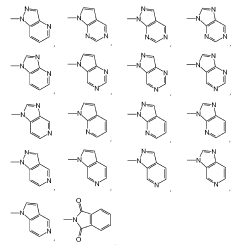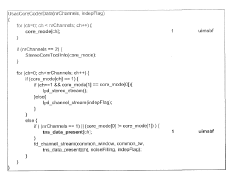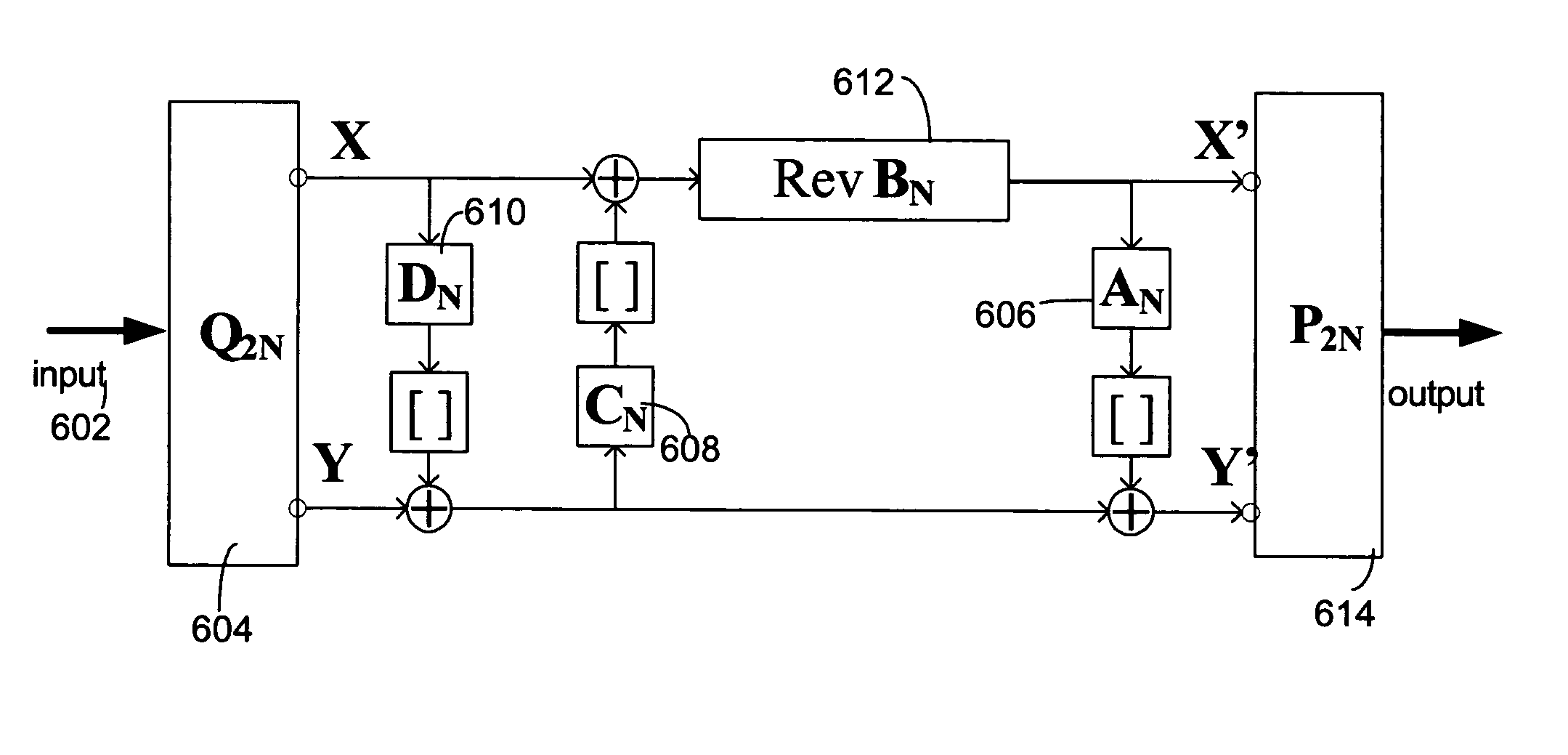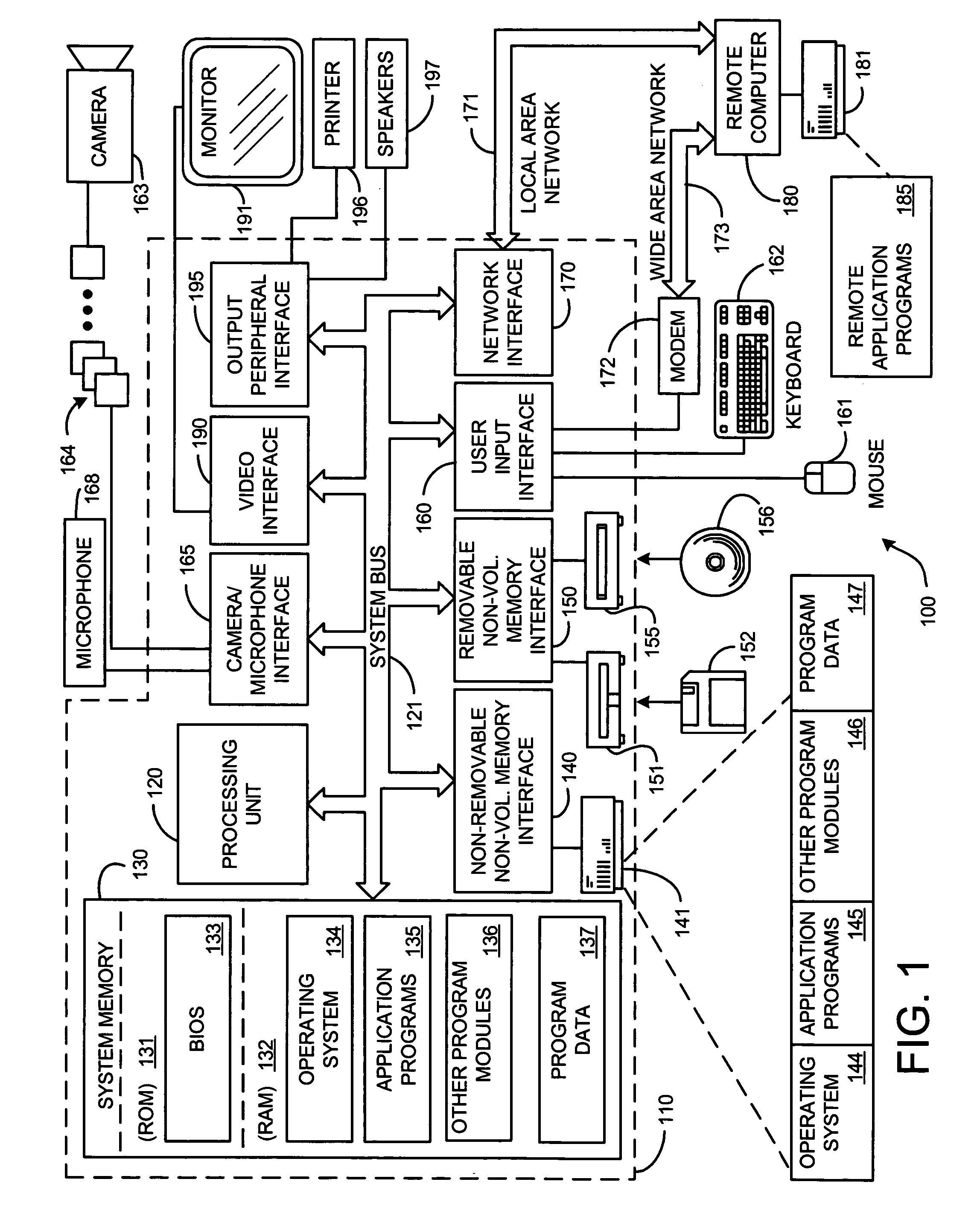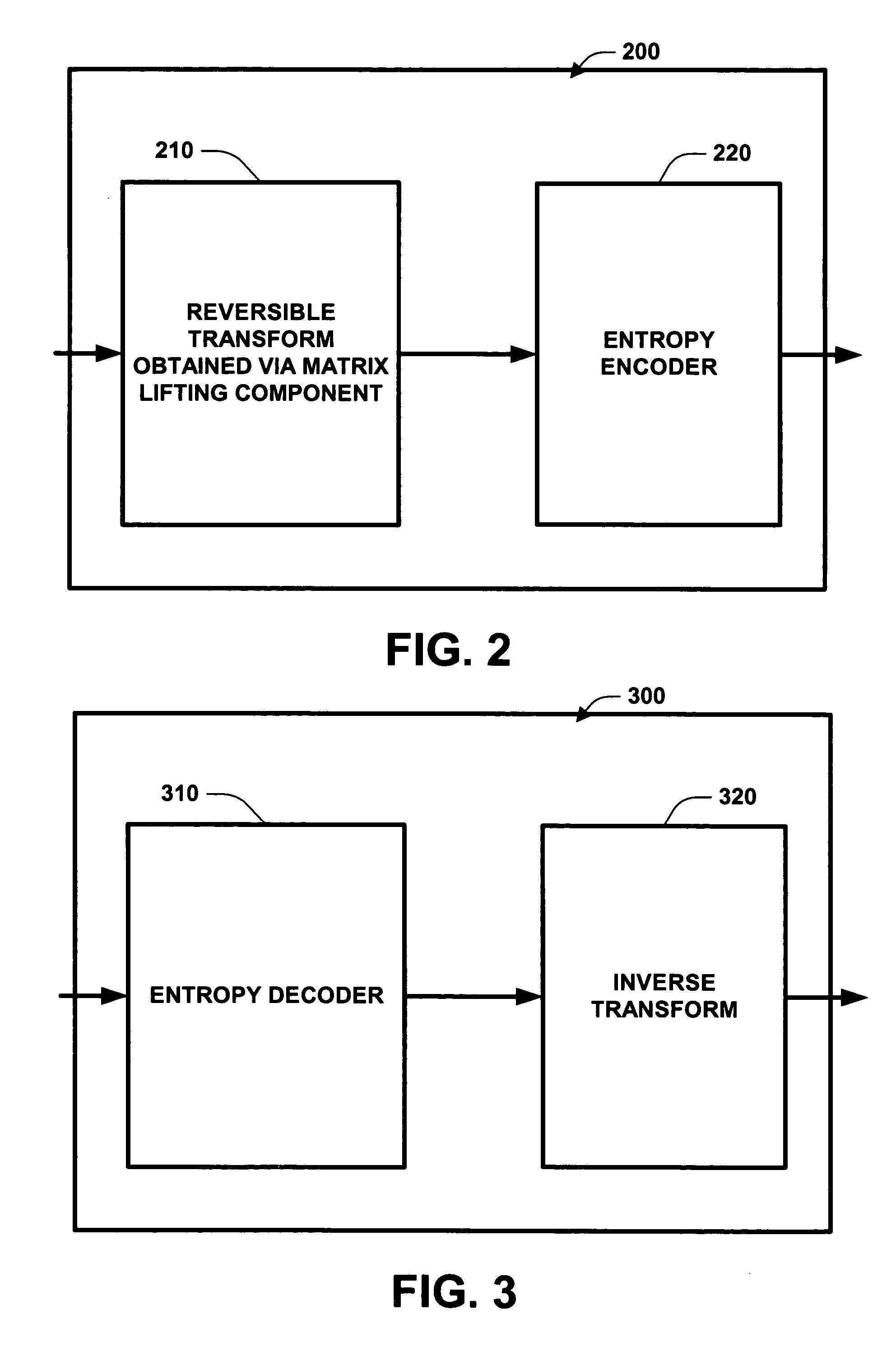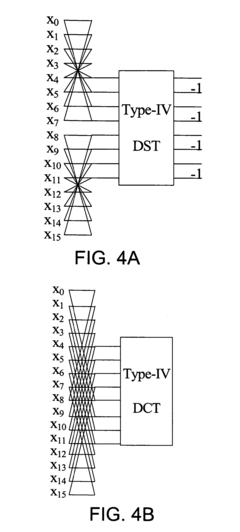LDAC Audio Codecs: Innovations and Future Directions
JUL 4, 20258 MIN READ
Generate Your Research Report Instantly with AI Agent
Patsnap Eureka helps you evaluate technical feasibility & market potential.
LDAC Codec Evolution
LDAC, developed by Sony in 2015, has undergone significant evolution since its inception. Initially designed to deliver high-quality audio over Bluetooth connections, LDAC has continuously improved to meet the growing demands of wireless audio transmission.
The first generation of LDAC supported a maximum bitrate of 990 kbps, which was a substantial improvement over existing Bluetooth audio codecs. This allowed for near-lossless audio transmission, providing a superior listening experience for users with compatible devices.
As the technology matured, Sony introduced adaptive bitrate capabilities to LDAC. This innovation enabled the codec to dynamically adjust its bitrate based on the connection quality, ensuring stable audio transmission even in challenging wireless environments. The adaptive feature allowed LDAC to operate at 330 kbps, 660 kbps, or 990 kbps, depending on the signal strength and interference levels.
In subsequent iterations, LDAC's efficiency was enhanced through improved compression algorithms. These advancements allowed for better audio quality at lower bitrates, extending battery life and improving overall performance across a wider range of devices.
The codec's evolution also saw the integration of advanced error correction techniques. These improvements significantly reduced audio dropouts and artifacts, particularly in high-interference environments or when the device was at the edge of its Bluetooth range.
LDAC's development path included optimization for various audio formats and sampling rates. Support for high-resolution audio up to 96 kHz/24-bit was a key milestone, catering to audiophiles and professional users who demand the highest fidelity in wireless audio reproduction.
More recent advancements in LDAC have focused on reducing latency, a critical factor for applications such as gaming and video streaming. Through sophisticated buffer management and processing optimizations, LDAC has achieved lower latency while maintaining its high-quality audio output.
The codec's evolution has also been marked by its increasing adoption across the audio industry. Initially exclusive to Sony devices, LDAC has gradually become available on a wider range of smartphones, headphones, and audio equipment from various manufacturers, solidifying its position as a leading high-quality Bluetooth audio codec.
Looking ahead, the LDAC codec continues to evolve, with ongoing research into further bitrate optimization, expanded device compatibility, and potential integration with emerging wireless technologies to meet the ever-increasing demands of the digital audio landscape.
The first generation of LDAC supported a maximum bitrate of 990 kbps, which was a substantial improvement over existing Bluetooth audio codecs. This allowed for near-lossless audio transmission, providing a superior listening experience for users with compatible devices.
As the technology matured, Sony introduced adaptive bitrate capabilities to LDAC. This innovation enabled the codec to dynamically adjust its bitrate based on the connection quality, ensuring stable audio transmission even in challenging wireless environments. The adaptive feature allowed LDAC to operate at 330 kbps, 660 kbps, or 990 kbps, depending on the signal strength and interference levels.
In subsequent iterations, LDAC's efficiency was enhanced through improved compression algorithms. These advancements allowed for better audio quality at lower bitrates, extending battery life and improving overall performance across a wider range of devices.
The codec's evolution also saw the integration of advanced error correction techniques. These improvements significantly reduced audio dropouts and artifacts, particularly in high-interference environments or when the device was at the edge of its Bluetooth range.
LDAC's development path included optimization for various audio formats and sampling rates. Support for high-resolution audio up to 96 kHz/24-bit was a key milestone, catering to audiophiles and professional users who demand the highest fidelity in wireless audio reproduction.
More recent advancements in LDAC have focused on reducing latency, a critical factor for applications such as gaming and video streaming. Through sophisticated buffer management and processing optimizations, LDAC has achieved lower latency while maintaining its high-quality audio output.
The codec's evolution has also been marked by its increasing adoption across the audio industry. Initially exclusive to Sony devices, LDAC has gradually become available on a wider range of smartphones, headphones, and audio equipment from various manufacturers, solidifying its position as a leading high-quality Bluetooth audio codec.
Looking ahead, the LDAC codec continues to evolve, with ongoing research into further bitrate optimization, expanded device compatibility, and potential integration with emerging wireless technologies to meet the ever-increasing demands of the digital audio landscape.
Hi-Res Audio Market
The Hi-Res Audio market has experienced significant growth in recent years, driven by increasing consumer demand for superior audio quality and advancements in audio technology. This market segment encompasses high-resolution audio formats, devices, and streaming services that offer audio quality superior to standard CD-quality audio.
The global Hi-Res Audio market size was valued at approximately $9.5 billion in 2020 and is projected to reach $18.2 billion by 2027, growing at a CAGR of 9.3% during the forecast period. This growth is attributed to several factors, including the rising popularity of high-quality music streaming services, increasing adoption of premium audio devices, and growing awareness among consumers about the benefits of high-resolution audio.
One of the key drivers of market growth is the proliferation of Hi-Res Audio-compatible devices. Smartphones, digital audio players, and home audio systems with Hi-Res Audio support have become more prevalent, making it easier for consumers to access and enjoy high-quality audio content. Major tech companies and audio equipment manufacturers have been investing heavily in developing and marketing Hi-Res Audio products, further fueling market expansion.
The music streaming industry has also played a crucial role in the growth of the Hi-Res Audio market. Leading streaming platforms such as Tidal, Amazon Music HD, and Qobuz have introduced Hi-Res Audio tiers, offering lossless and high-resolution audio options to subscribers. This trend has encouraged other major players like Spotify and Apple Music to follow suit, expanding the availability of Hi-Res Audio content to a broader audience.
Consumer demographics have shifted, with younger generations showing increased interest in high-quality audio experiences. This demographic shift has led to a growing demand for premium audio products and services, driving innovation and competition in the Hi-Res Audio market. Additionally, the rise of audiophile communities and online forums has contributed to greater awareness and knowledge sharing about Hi-Res Audio technologies.
The automotive industry has emerged as a significant growth area for Hi-Res Audio, with car manufacturers integrating high-resolution audio systems into their vehicles. This trend is expected to continue, creating new opportunities for Hi-Res Audio technology providers and content creators. The integration of Hi-Res Audio in smart home devices and virtual reality applications is also expected to drive market growth in the coming years.
The global Hi-Res Audio market size was valued at approximately $9.5 billion in 2020 and is projected to reach $18.2 billion by 2027, growing at a CAGR of 9.3% during the forecast period. This growth is attributed to several factors, including the rising popularity of high-quality music streaming services, increasing adoption of premium audio devices, and growing awareness among consumers about the benefits of high-resolution audio.
One of the key drivers of market growth is the proliferation of Hi-Res Audio-compatible devices. Smartphones, digital audio players, and home audio systems with Hi-Res Audio support have become more prevalent, making it easier for consumers to access and enjoy high-quality audio content. Major tech companies and audio equipment manufacturers have been investing heavily in developing and marketing Hi-Res Audio products, further fueling market expansion.
The music streaming industry has also played a crucial role in the growth of the Hi-Res Audio market. Leading streaming platforms such as Tidal, Amazon Music HD, and Qobuz have introduced Hi-Res Audio tiers, offering lossless and high-resolution audio options to subscribers. This trend has encouraged other major players like Spotify and Apple Music to follow suit, expanding the availability of Hi-Res Audio content to a broader audience.
Consumer demographics have shifted, with younger generations showing increased interest in high-quality audio experiences. This demographic shift has led to a growing demand for premium audio products and services, driving innovation and competition in the Hi-Res Audio market. Additionally, the rise of audiophile communities and online forums has contributed to greater awareness and knowledge sharing about Hi-Res Audio technologies.
The automotive industry has emerged as a significant growth area for Hi-Res Audio, with car manufacturers integrating high-resolution audio systems into their vehicles. This trend is expected to continue, creating new opportunities for Hi-Res Audio technology providers and content creators. The integration of Hi-Res Audio in smart home devices and virtual reality applications is also expected to drive market growth in the coming years.
LDAC Technical Challenges
LDAC, as an advanced audio codec technology, faces several technical challenges that need to be addressed for its continued evolution and widespread adoption. One of the primary challenges is achieving higher compression efficiency while maintaining superior audio quality. As LDAC aims to deliver high-resolution audio wirelessly, it must constantly push the boundaries of compression algorithms to reduce data rates without compromising sound fidelity.
Another significant challenge lies in reducing latency, which is crucial for real-time applications such as gaming and live performances. While LDAC offers impressive audio quality, its current latency levels may not be suitable for all use cases. Developing techniques to minimize processing delays and optimize data transmission is an ongoing area of research.
Power consumption remains a critical concern, particularly for battery-powered devices. LDAC's complex encoding and decoding processes require substantial computational resources, which can drain device batteries quickly. Balancing power efficiency with high-quality audio output is a delicate task that engineers must continually refine.
Compatibility and interoperability present additional hurdles. As LDAC is a proprietary technology developed by Sony, ensuring seamless integration with a wide range of devices and platforms can be challenging. Expanding support across various operating systems, hardware configurations, and audio ecosystems is essential for broader market penetration.
The dynamic nature of wireless environments poses another set of challenges. LDAC must adapt to varying signal strengths, interference, and network congestion to maintain consistent audio quality. Developing robust error correction and adaptive bitrate mechanisms is crucial for reliable performance across different usage scenarios.
Furthermore, as the audio industry moves towards more immersive experiences, LDAC faces the challenge of supporting multi-channel and object-based audio formats. Extending the codec's capabilities to handle these complex audio configurations while maintaining its efficiency and quality advantages is a significant technical undertaking.
Lastly, the ever-evolving landscape of audio standards and competing technologies necessitates continuous innovation. LDAC must stay ahead of emerging codecs and audio transmission protocols to maintain its position as a leading high-resolution wireless audio solution. This requires ongoing research and development to incorporate new compression techniques, psychoacoustic models, and signal processing algorithms.
Another significant challenge lies in reducing latency, which is crucial for real-time applications such as gaming and live performances. While LDAC offers impressive audio quality, its current latency levels may not be suitable for all use cases. Developing techniques to minimize processing delays and optimize data transmission is an ongoing area of research.
Power consumption remains a critical concern, particularly for battery-powered devices. LDAC's complex encoding and decoding processes require substantial computational resources, which can drain device batteries quickly. Balancing power efficiency with high-quality audio output is a delicate task that engineers must continually refine.
Compatibility and interoperability present additional hurdles. As LDAC is a proprietary technology developed by Sony, ensuring seamless integration with a wide range of devices and platforms can be challenging. Expanding support across various operating systems, hardware configurations, and audio ecosystems is essential for broader market penetration.
The dynamic nature of wireless environments poses another set of challenges. LDAC must adapt to varying signal strengths, interference, and network congestion to maintain consistent audio quality. Developing robust error correction and adaptive bitrate mechanisms is crucial for reliable performance across different usage scenarios.
Furthermore, as the audio industry moves towards more immersive experiences, LDAC faces the challenge of supporting multi-channel and object-based audio formats. Extending the codec's capabilities to handle these complex audio configurations while maintaining its efficiency and quality advantages is a significant technical undertaking.
Lastly, the ever-evolving landscape of audio standards and competing technologies necessitates continuous innovation. LDAC must stay ahead of emerging codecs and audio transmission protocols to maintain its position as a leading high-resolution wireless audio solution. This requires ongoing research and development to incorporate new compression techniques, psychoacoustic models, and signal processing algorithms.
Current LDAC Solutions
01 LDAC codec implementation for high-quality audio transmission
LDAC is an audio coding technology designed for high-quality wireless audio transmission. It enables the transmission of High-Resolution Audio content, offering better sound quality than conventional Bluetooth audio codecs. LDAC supports various bit rates and sampling frequencies, allowing for flexible adaptation to different network conditions and device capabilities.- LDAC codec implementation for high-quality audio transmission: LDAC is a high-resolution audio codec designed for Bluetooth audio transmission. It offers improved audio quality by supporting higher bitrates and wider frequency ranges compared to standard codecs. LDAC allows for efficient encoding and decoding of audio data, resulting in near-lossless audio transmission over Bluetooth connections.
- Adaptive bitrate and sampling rate adjustment: LDAC incorporates adaptive bitrate and sampling rate adjustment techniques to optimize audio quality based on network conditions and device capabilities. This allows for dynamic adjustment of audio parameters to maintain the best possible sound quality while ensuring stable transmission.
- Integration with audio processing systems: LDAC codec can be integrated into various audio processing systems, including mobile devices, wireless speakers, and headphones. This integration enables seamless high-quality audio playback across different devices and platforms, enhancing the overall user experience.
- Error correction and packet loss concealment: LDAC incorporates advanced error correction and packet loss concealment techniques to maintain audio quality in challenging wireless environments. These features help minimize audio artifacts and dropouts, ensuring a consistent listening experience even in less-than-ideal conditions.
- Compatibility with existing Bluetooth audio standards: While offering superior audio quality, LDAC is designed to be compatible with existing Bluetooth audio standards and profiles. This ensures backward compatibility with a wide range of devices and allows for seamless integration into existing audio ecosystems.
02 Audio quality enhancement through adaptive bit rate control
Adaptive bit rate control mechanisms are employed to optimize audio quality based on network conditions and device capabilities. These systems dynamically adjust the bit rate and encoding parameters to maintain the best possible audio quality while ensuring stable transmission. This approach helps to minimize audio dropouts and maintain consistent performance in varying network environments.Expand Specific Solutions03 Integration of LDAC with Bluetooth audio streaming
LDAC codec is integrated into Bluetooth audio streaming systems to enhance wireless audio quality. This integration involves optimizing the codec for Bluetooth transmission protocols, managing power consumption, and ensuring compatibility with various Bluetooth-enabled devices. The implementation aims to provide high-fidelity audio experiences while maintaining the convenience of wireless connectivity.Expand Specific Solutions04 Audio processing and error concealment techniques
Advanced audio processing and error concealment techniques are implemented to maintain high audio quality in challenging transmission conditions. These methods include sophisticated algorithms for packet loss concealment, audio interpolation, and noise reduction. By employing these techniques, the system can deliver smooth and high-quality audio playback even when faced with network instabilities or interference.Expand Specific Solutions05 Multi-channel audio support and spatial audio enhancement
LDAC codec implementations include support for multi-channel audio and spatial audio enhancement. These features enable the transmission and reproduction of immersive audio experiences, such as surround sound and 3D audio. The codec is optimized to efficiently encode and decode multiple audio channels while preserving spatial information, resulting in a more realistic and engaging listening experience.Expand Specific Solutions
LDAC Industry Players
The LDAC Audio Codec market is in a growth phase, with increasing demand for high-quality wireless audio solutions. The market size is expanding rapidly, driven by the proliferation of wireless audio devices and consumer preference for superior sound quality. Technologically, LDAC is relatively mature, with major players like Sony (developer of LDAC), Samsung, and LG Electronics leading innovation. Companies such as Fraunhofer-Gesellschaft and Electronics & Telecommunications Research Institute are contributing to advancements in audio codec technology. The competitive landscape is characterized by a mix of established electronics giants and specialized audio technology firms, with ongoing research and development efforts focused on improving compression efficiency, reducing latency, and enhancing overall audio quality in wireless transmission.
LG Electronics, Inc.
Technical Solution: LG has been incorporating LDAC technology into its smartphones and audio products to deliver high-quality wireless audio experiences. Their approach focuses on seamless integration with their WebOS platform and ThinQ AI technology. LG's implementation of LDAC supports the full 990 kbps transmission rate, ensuring high-fidelity audio playback[7]. They have also developed an AI-enhanced sound processing algorithm that works in conjunction with LDAC to optimize audio quality based on content type and listening environment[8]. LG is exploring the use of LDAC in their automotive audio systems to provide premium in-car audio experiences[9].
Strengths: Integration with WebOS and ThinQ AI, support for maximum LDAC bitrate, and expansion into automotive audio. Weaknesses: Reliance on third-party codec technology, potential limitations in codec customization.
Samsung Electronics Co., Ltd.
Technical Solution: Samsung has incorporated LDAC technology into its Galaxy series smartphones and audio devices. Their implementation focuses on providing high-quality audio experiences across their ecosystem. Samsung's approach includes optimizing LDAC for their Exynos processors, enabling efficient decoding and improved battery life[4]. They have also developed adaptive bit rate technology that dynamically adjusts the LDAC transmission rate based on wireless conditions, ensuring stable audio quality[5]. Samsung is exploring the integration of LDAC with their Bixby AI assistant to provide context-aware audio enhancements and personalized listening experiences[6].
Strengths: Wide adoption across Samsung devices, optimization for Exynos processors, and adaptive bit rate technology. Weaknesses: Dependency on Sony's LDAC license, limited control over core codec development.
LDAC Core Technologies
Audio encoder for encoding a multichannel signal and audio decoder for decoding an encoded audio signal
PatentWO2016142336A1
Innovation
- A fully switchable audio codec that combines a linear prediction domain encoder and a frequency domain encoder, allowing for instantaneous switching between ACELP/TCX coding and AAC stereo coding, with a controller that adapts multichannel coding techniques based on signal characteristics, enabling seamless switching between LPD and FD encoding/decoding.
System and method for a media codec employing a reversible transform obtained via matrix lifting
PatentInactiveUS20050083216A1
Innovation
- A system and method employing a reversible modified discrete cosine transform (RMDCT) achieved via matrix lifting, which reduces quantization noise and allows for integer arithmetic, enabling scalable and portable audio coding across lossy and lossless modes.
LDAC Standardization
LDAC standardization has been a crucial process in establishing this audio codec as a widely recognized and adopted technology in the audio industry. The standardization efforts have primarily been led by Sony Corporation, the original developer of LDAC, in collaboration with various industry partners and standardization bodies.
The journey towards LDAC standardization began with its introduction as a proprietary technology by Sony in 2015. Initially, LDAC was exclusive to Sony devices, limiting its widespread adoption. However, recognizing the potential of LDAC to enhance wireless audio quality across the industry, Sony took steps to make it more accessible.
A significant milestone in LDAC standardization was achieved in 2017 when Google announced that LDAC would be integrated into the Android Open Source Project (AOSP) as part of Android 8.0 Oreo. This move greatly expanded the potential user base for LDAC-enabled devices and encouraged other manufacturers to adopt the technology.
The Bluetooth Special Interest Group (SIG) played a crucial role in the standardization process. In 2019, LDAC was officially adopted as part of the Bluetooth A2DP (Advanced Audio Distribution Profile) specification. This inclusion in the Bluetooth standard further legitimized LDAC and facilitated its integration into a wider range of devices and applications.
As part of the standardization process, detailed technical specifications and implementation guidelines for LDAC were made available to manufacturers and developers. This documentation ensured consistent implementation across different devices and platforms, maintaining the high-quality audio experience that LDAC promises.
The standardization of LDAC also involved extensive testing and certification processes. Devices and components implementing LDAC must undergo rigorous testing to ensure compliance with the established standards. This certification process helps maintain the integrity of the LDAC brand and ensures consistent performance across different implementations.
Throughout the standardization journey, Sony has continued to refine and improve LDAC technology. These ongoing developments have been incorporated into the standard, ensuring that LDAC remains at the forefront of wireless audio technology.
The successful standardization of LDAC has had far-reaching implications for the audio industry. It has fostered innovation among manufacturers, encouraged the development of high-quality audio products, and ultimately benefited consumers by providing access to superior wireless audio experiences across a wide range of devices.
The journey towards LDAC standardization began with its introduction as a proprietary technology by Sony in 2015. Initially, LDAC was exclusive to Sony devices, limiting its widespread adoption. However, recognizing the potential of LDAC to enhance wireless audio quality across the industry, Sony took steps to make it more accessible.
A significant milestone in LDAC standardization was achieved in 2017 when Google announced that LDAC would be integrated into the Android Open Source Project (AOSP) as part of Android 8.0 Oreo. This move greatly expanded the potential user base for LDAC-enabled devices and encouraged other manufacturers to adopt the technology.
The Bluetooth Special Interest Group (SIG) played a crucial role in the standardization process. In 2019, LDAC was officially adopted as part of the Bluetooth A2DP (Advanced Audio Distribution Profile) specification. This inclusion in the Bluetooth standard further legitimized LDAC and facilitated its integration into a wider range of devices and applications.
As part of the standardization process, detailed technical specifications and implementation guidelines for LDAC were made available to manufacturers and developers. This documentation ensured consistent implementation across different devices and platforms, maintaining the high-quality audio experience that LDAC promises.
The standardization of LDAC also involved extensive testing and certification processes. Devices and components implementing LDAC must undergo rigorous testing to ensure compliance with the established standards. This certification process helps maintain the integrity of the LDAC brand and ensures consistent performance across different implementations.
Throughout the standardization journey, Sony has continued to refine and improve LDAC technology. These ongoing developments have been incorporated into the standard, ensuring that LDAC remains at the forefront of wireless audio technology.
The successful standardization of LDAC has had far-reaching implications for the audio industry. It has fostered innovation among manufacturers, encouraged the development of high-quality audio products, and ultimately benefited consumers by providing access to superior wireless audio experiences across a wide range of devices.
LDAC Energy Efficiency
LDAC, developed by Sony, is renowned for its high-quality audio transmission capabilities. However, its energy efficiency has been a subject of ongoing research and improvement. The codec's energy consumption is a critical factor, especially for battery-powered devices like wireless headphones and portable audio players.
LDAC employs adaptive bit rate technology, which allows it to adjust its transmission rate based on the wireless connection quality. This adaptability contributes to energy efficiency by optimizing data transfer and reducing unnecessary power consumption. The codec can operate at different bit rates, ranging from 330 kbps to 990 kbps, enabling devices to balance audio quality and power usage according to their needs and available resources.
Recent innovations in LDAC have focused on enhancing its energy efficiency without compromising audio quality. One significant advancement is the implementation of more sophisticated compression algorithms that maintain high-fidelity audio while reducing the overall data payload. This reduction in data transmission directly correlates to lower power consumption in both the transmitting and receiving devices.
Furthermore, LDAC has been optimized for use with Bluetooth Low Energy (BLE) audio, a specification designed to provide high-quality audio transmission with reduced power consumption. This integration allows LDAC to leverage BLE's energy-efficient features, such as improved sleep modes and more efficient data packet structures, further reducing the overall energy footprint of audio streaming.
Hardware manufacturers have also contributed to LDAC's energy efficiency by developing specialized chips that can process LDAC streams more efficiently. These dedicated audio processors are designed to handle LDAC encoding and decoding with minimal power draw, significantly extending battery life in portable devices.
The codec's energy efficiency is particularly crucial in the context of true wireless stereo (TWS) earbuds, where battery size is severely constrained. LDAC implementations in TWS devices have seen continuous improvements, with manufacturers fine-tuning power management systems to optimize the balance between audio quality and battery longevity.
Looking ahead, future directions for LDAC energy efficiency may include the integration of artificial intelligence to predict and adapt to user listening patterns, potentially reducing unnecessary high-quality transmissions when they are not needed. Additionally, research into more efficient signal processing techniques and the potential use of neuromorphic computing could lead to even lower power consumption in future iterations of the codec.
LDAC employs adaptive bit rate technology, which allows it to adjust its transmission rate based on the wireless connection quality. This adaptability contributes to energy efficiency by optimizing data transfer and reducing unnecessary power consumption. The codec can operate at different bit rates, ranging from 330 kbps to 990 kbps, enabling devices to balance audio quality and power usage according to their needs and available resources.
Recent innovations in LDAC have focused on enhancing its energy efficiency without compromising audio quality. One significant advancement is the implementation of more sophisticated compression algorithms that maintain high-fidelity audio while reducing the overall data payload. This reduction in data transmission directly correlates to lower power consumption in both the transmitting and receiving devices.
Furthermore, LDAC has been optimized for use with Bluetooth Low Energy (BLE) audio, a specification designed to provide high-quality audio transmission with reduced power consumption. This integration allows LDAC to leverage BLE's energy-efficient features, such as improved sleep modes and more efficient data packet structures, further reducing the overall energy footprint of audio streaming.
Hardware manufacturers have also contributed to LDAC's energy efficiency by developing specialized chips that can process LDAC streams more efficiently. These dedicated audio processors are designed to handle LDAC encoding and decoding with minimal power draw, significantly extending battery life in portable devices.
The codec's energy efficiency is particularly crucial in the context of true wireless stereo (TWS) earbuds, where battery size is severely constrained. LDAC implementations in TWS devices have seen continuous improvements, with manufacturers fine-tuning power management systems to optimize the balance between audio quality and battery longevity.
Looking ahead, future directions for LDAC energy efficiency may include the integration of artificial intelligence to predict and adapt to user listening patterns, potentially reducing unnecessary high-quality transmissions when they are not needed. Additionally, research into more efficient signal processing techniques and the potential use of neuromorphic computing could lead to even lower power consumption in future iterations of the codec.
Unlock deeper insights with Patsnap Eureka Quick Research — get a full tech report to explore trends and direct your research. Try now!
Generate Your Research Report Instantly with AI Agent
Supercharge your innovation with Patsnap Eureka AI Agent Platform!
